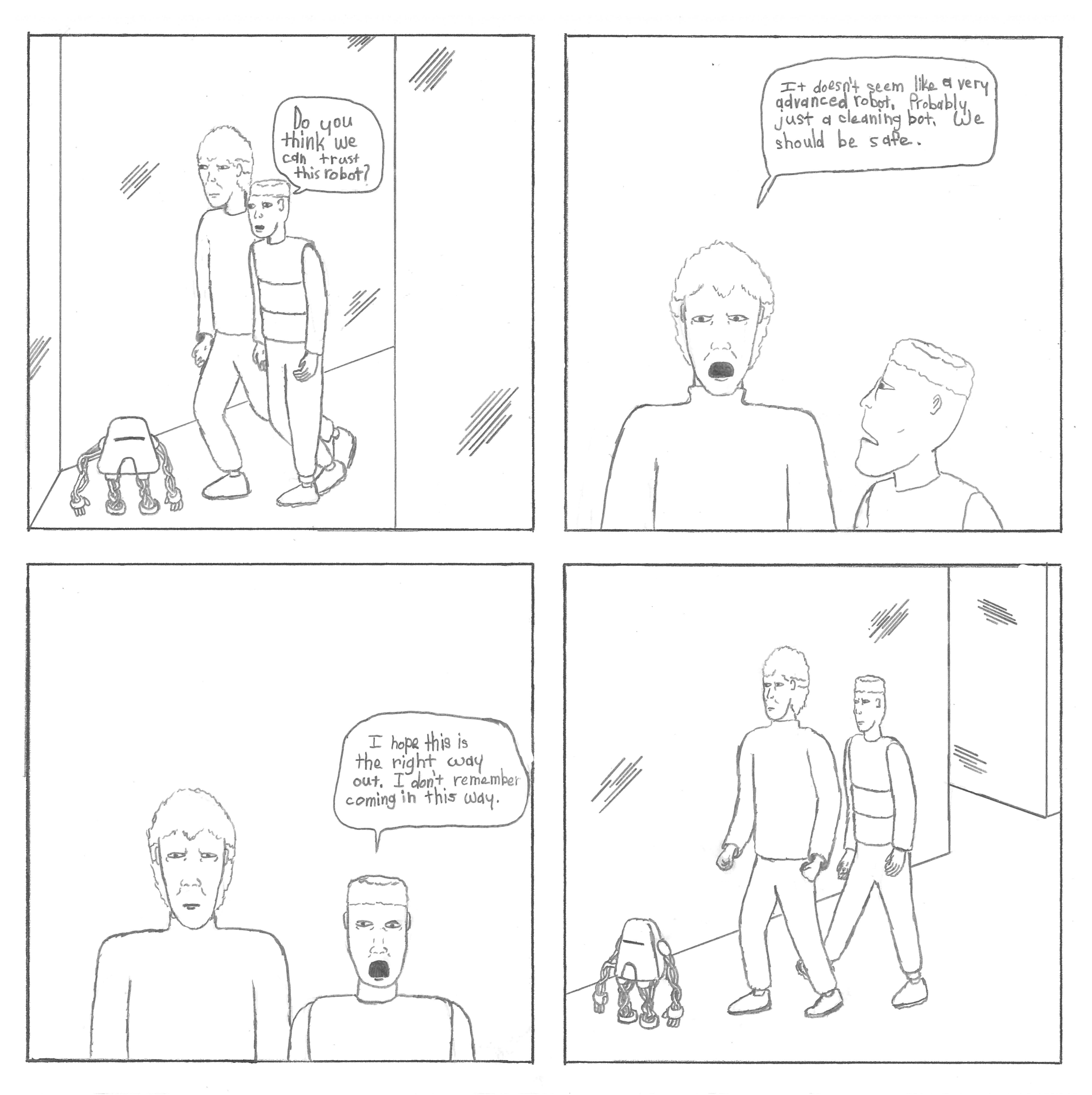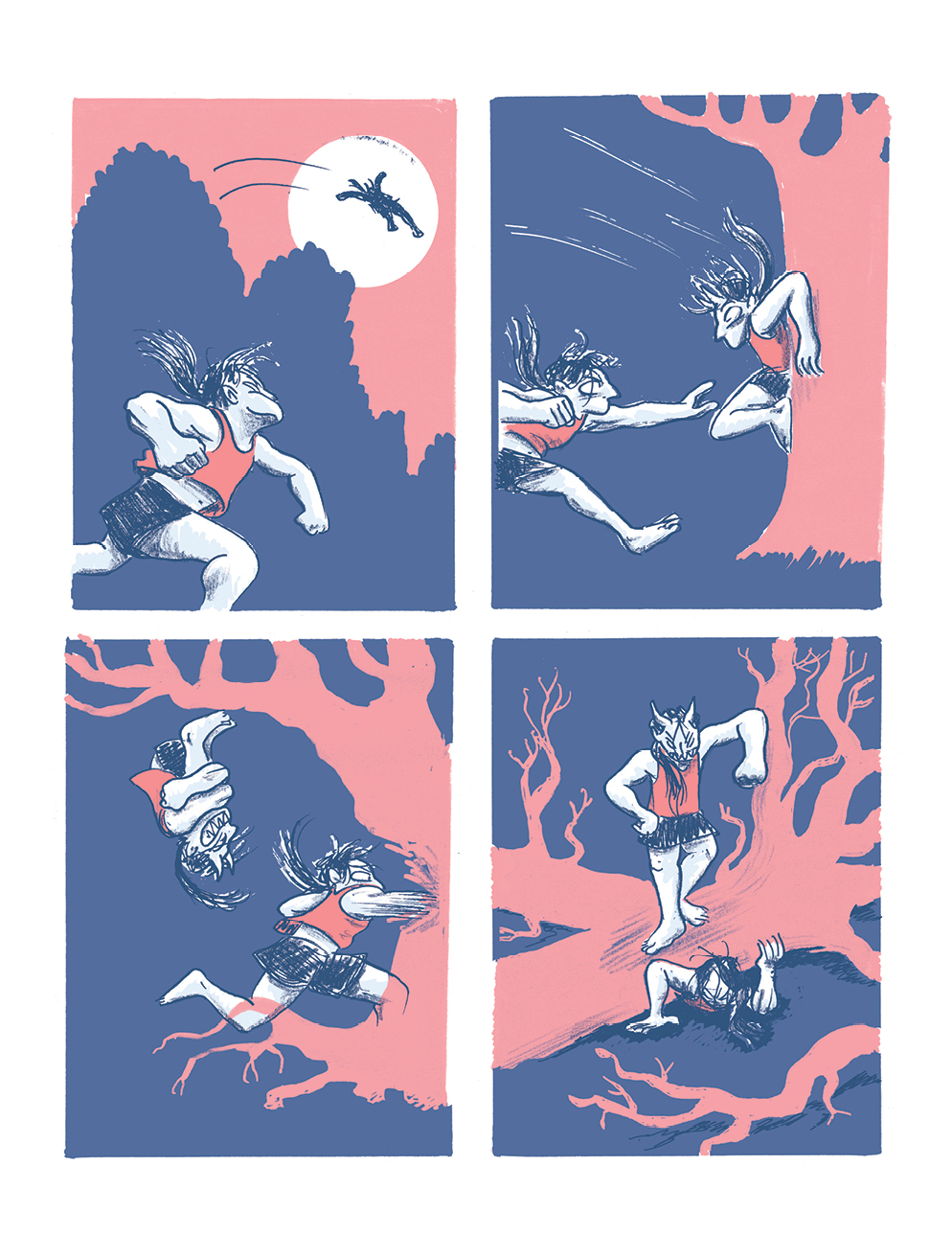Sally IngrahamMay 4, 2017NewsSam Ombiri shares thoughts on Sammy Harkham’s Crickets #6 – plus other comics-related news!
—————————————————————————————————
Sam Ombiri here: What a fantastic issue of Sammy Harkham’s Crickets we got (#6)! I have to begin with how we got wonderful drawings from Harkham. Of course there are many comics drawn this way and many not, and I really don’t think about these differences so much, unless I’ve heard the author specifically bringing up the motivations for drawing the way they do. With Harkham’s drawings feeling somewhat rigid, it then becomes hard to penetrate the abstractions being offered – more so because they seem unlikely with this type of drawing. Actually it is really great that they aren’t so obvious to discern, even after “being discovered”, which is a testament to their strength.
Harkham says (in Comic Book Decalogue Episode #5, 2015), “The kind of storytelling I’m interested in is making things really stacked and dense so that one thing is going on with dialogue, one thing’s going on visually, and one thing’s going on in the background.” He adds, laughing, “Just to push the anxiety level.”
Abstractions are being offered to you. I think this is what is referred to by Harkham as dematerialization of drama; which I believe was first said by William Oldham in conjunction to Harkham’s work. Harkham says, regarding Somersaulting (which appears in his collected stories Everything Together, PictureBox 2012), “Any sort of plops is sort of the creative counterweight for the more quiet, calmer, open, sort of more contemplative sequences to still make it a comic.” – Comic Book Decalogue Episode #5
I think Harkham is still applying that principle to Blood of the Virgin (Crickets #6), but in a different way, thankfully. He’s advancing this new trick he found. What I really like is that Harkham didn’t just want to deal with another medium by making comics. He looks at comics like it’s the best medium, and the things that excite him about other mediums only furthers his enthusiasm for the comics medium. If I may make a contrived comparison, and this comparison isn’t completely parallel to Harkham, Leos Carax is a director who maybe wants to be a musician, so as a result his movies have scenes like this:
https://www.youtube.com/watch?v=80xOJ2I2oVc
Leos Carax says his first movie was called Boy Meets Girl, but all his of movies can be called “boy meets girl” and it’s often the same movie, featuring one guy in love with two women, with the exception of Holy Motors. Likewise, Sammy says his stories are all about denial (a similar denial is exemplified by Burt Lancaster in The Swimmer!)
Harkham said in the past that he doesn’t want things to be expressive and moments to hold value over others. I think Harkham must see something similar in Brian Chippendale’s Ninja, where every panel has the same intensity. Or it’s like how Robert Bresson says he wants his actors to be like a virtuoso in portraying their afflictions. Of course other directors do this too – I only bring up Bresson because for me he has exhibited the most success with this mode of approaching expressiveness – in the way that I think Harkham is talking about.
Harkham once said that he has a distaste for when sadness is conveyed just by showing a character crying. Harkham’s connection between comics and film has more to do with Emir Kusturica, but I’m going to speak more about intention and methods. Recently, someone brought up the duck motif – they told me they’re excited to see what Harkham will do with it. Personally I think we already saw. It has happened, it’s already an active force in the story. The ambient quality of the duck is what we’ll get. I hesitate to call it a symbol. I feel personally that if I attempt to say what it is, I’ll sully it.
I was thinking a lot about how Andrei Tarkovsky said, “Bresson attempts in his films not to be symbolic; he tries to create a form as inexhaustible as nature, life itself. Of course this doesn’t always work. In fact, there are episodes in his films that are extremely symbolic and, therefore, limited – symbolic and not poetic.” (from an interview with Tarkovsky on A Bittersweet Life.) Tarkovsky then continues to say, “An obvious but banal example of this is the rabbit hunt in Mouchette.” I feel like if I rewatch Mouchette, Tarkovsky has officially ruined the scene for me, but you know, I’m only saying that as a joke, as Tarkovsky and Bresson kind of have this whole detached philosophy to the perception of their work.
Harkham’s primary concern seems to be to entertain – it’s just the way that symbol works that’s similar. When the duck motif was brought to my attention it felt somewhat ruined. Now, with what Tarkovsky said in relation to Bresson’s rabbit scene, Bresson’s intentions were rather different for this scene – but there’s still something of a consensus. Tarkovsky refers to this as a moral influence between artists, without which art cannot exist.
Harkham said, regarding Somersaulting and I’d imagine his work even now, “I realize that when you are directly influenced by someone, it’s not that you want to see something and copy it, it’s that you see someone, it’s a shortcut for a place you wanna go, so I knew the tone for that story and seeing Hopper’s work, in the flesh, just got me that much closer as a way to get there. Realizing that composition and a certain kind of composed quality, really measured quality, could go a long way towards that. So I think the story if I had never seen that show, the story would’ve probably resembled that in a lot of ways, but I probably would’ve taken more of a windy path to get there.“
Tarkovsky also said this one thing which is very similar to what Harkham said: “Just like everybody else who strives for simplicity and depth, I can’t help but identify with what he has achieved in this field. But on the other hand, even if Bresson would never have existed, we would have eventually come across this notion of a lapidary style, simplicity and depth.”
It’s a very similar idea in my mind, that these artists with different goals, who operate on different principles, can end up at the same place with the same goals. Or it can even be like Krzysztof Kieslowski says – “People in different places and for different reasons think of the same thing I tried to talk about – things that connect people. I think this feeling, this music, all these notes already exist, scattered somewhere, waiting for the person who’ll put them in order. The fact that two different people at different times, in different places, from different social strata, can put these notes together in the same way seems to be a sign of what connects people.” (from Cinema Lesson in Blue)
In The Blood of the Virgin, the story’s progression isn’t hindered by this other unnamed will to cause Seymour more afflictions slowly revealing itself. Seymour’s running out of places to go. We know he’ll end up face down just like it shows in the cover – the way it all turns out is worse than what I imagined. Especially for how believable it is.
Harkham says, “I don’t really strive for realism, but more for specificity.” The order of the tragedy isn’t what’s being relied on really, and it’s not the order that makes it compelling, but it does leave everything grounded. Harkham says that the way he sees it is, “Plot is just a coat hanger to hang ideas and jokes and emotions on to.” The moment where Joy just up and says movies are cheesy – in this moment when Seymour is trying really hard to reach the destination of this major quest he’s been on – has to join the ranks of that which he greatly reveres as important. As a reader at that point, I hadn’t really realized how much of his vision is being denied to him – it had already started. All I could think was “Uh-oh”. It’s these small micro losses that tell you clearly that everything’s coming apart. For some reason I thought that Seymour’s life would maybe get better, despite his struggles.
Harkham says, “I realized that what he (Edward Hopper) was doing with his paintings was something that I was really interested in – with a lot of the architectural drawings, and the interior a certain tone that you get out of the everyday objects and everyday spaces, trying to find the divine or the ambiguous – and he kind of does that so well, so it’s a visual touch point for that story I was working on, and I saw the show and there are a couple of exact echoes of the paintings in that story.“
Leos Carax compares cinema unfavorably to dreams, as in dreams you need to invent the way the way people move. Harkham says, “Cartooning is knowing how to use the sickeningly stupid blunt emotion of each panel and build something emotionally complex of it.“
Like designing someone’s car to signify what kind of person it is that drives it, or how Harkham says he likes how in The Swimmer, “It makes sense that the whole time the main character is in his swimsuit.” That the imagery is in complete conjunction with what’s going on with the story, and for one reason or another that’s what he’s aiming for. That the work dictates what’s gonna be in it.
“What I liked about comics as a teenager is the same thing I liked about punk rock and what I liked about gory horror movies: It just felt completely trashy and disgusting and stupid. You’d be embarrassed to read a comic on the bus – you still would. But I like that. It’s embracing that surface quality, not trying to make your work look smart at all, and then surprising the reader that this is a little bit richer, more layered, that there’s a lot more going on.”
I think what Harkham is saying is similar to how Funny Games lingers on people’s radar as just some fun horror movie to watch – but there’s really a ton of things to unpack there, so then he likes that spot. I’m not so fond of this idea of creating this spectacle of finding a dense story in an underestimated medium. I’m glad that Harkham doesn’t count on this spectacle, as it feels like a cheap trick. I feel similarly about something that Austin English said about how The Disgusting Room was made – he has in his mind come up with this idea that people who’ll read The Disgusting Room will think it’s a newspaper or something, but then be surprised with this imaginative comic (which it is). After hearing that, however, whatever enjoyment I got out of The Disgusting Room went up in flames, because what about the rest of us, where we already know how great comics can be? Or even to an extent I hear Patrick Kyle say he wants to make comics that can only be made as a comic – does that enhance the work being made though?
There’s a great essay by Connor Willumsen at the end of this issue of Crickets that talks about these things better than I can, about how what the soundtrack of a movie would be, or the sound design, or a prop, is something you think differently, but not too differently from comics. What the soundtrack is, is similar to the way an author can linger on, let’s say, the gestures of a character, and really slowing things down, to the most minuscule degree. It’s more acceptable, as a medium, to do that, so in turn that might be what a recurring element in a movie might otherwise do. I’m thinking of how it may all be about lingering elements within a work.
In Holy Motors a segment of this song plays before the character Mr. Oscar assumes a new identity. In some movies the soundtrack is something else entirely though. The best version of this coming to fruition that I can think of is in Blue from the Three Colors Trilogy – both movies kind of end with a musical number, though I have to insist that the song at the end of Blue is more appropriate than Holy Motors‘ within the story.
Connor doesn’t hone in on a cut and paste principle – that’s just easily applied – but the way I remember it, if memory serves (it often doesn’t serve me well), he just says that this is a principle that a maker or a reader can think of in conjunction with what the author might be doing that might otherwise remain obscure. – Sam Ombiri
(Additional quotes by Sammy Harkham sourced from the article Sammy Harkham: Naturalism and Specificity, and a Los Angeles Times article – Sammy Harkham, a City’s Comics Crusader.)
5-4-2017 – Sam Ombiri
—————————————————————————————————
Sally here – check out this incredible compilation of stock footage from Marvel and DC studios in the 1970’s – you can watch it below. There are lots of wow-inducing moments, but I especially enjoyed a brief glimpse into the beginning of Trevor Von Eeden‘s career – see him at 17 years of age showing some newly drawn pages to an editor at DC Comics – watch for him at minute 8:44! (via The Comics Journal)
—————————————————————————————————
Keep an eye out for The Encyclopedia of Black Comics, coming this September from Fulcrum Publishing and Professor Sheena C. Howard (Eisner-award winning author of Black Comics: Politics of Race and Representation). According to her call for writers (which went out last August) she expects the book to include entries on at least “150 Black people in the comics industry who have published significant work in the United States or done notable work in the comics field, being included in the volume (including editors, publishers, illustrators, artists, creators, etc).” You can pre-order the book on Amazon.
—————————————————————————————————
Suzy and Cecil – 5-4-2017 – by Gabriella Tito
—————————————————————————————————
Joanie and Jordie – 5-4-2017 – by Caleb Orecchio
Share this page: [...]
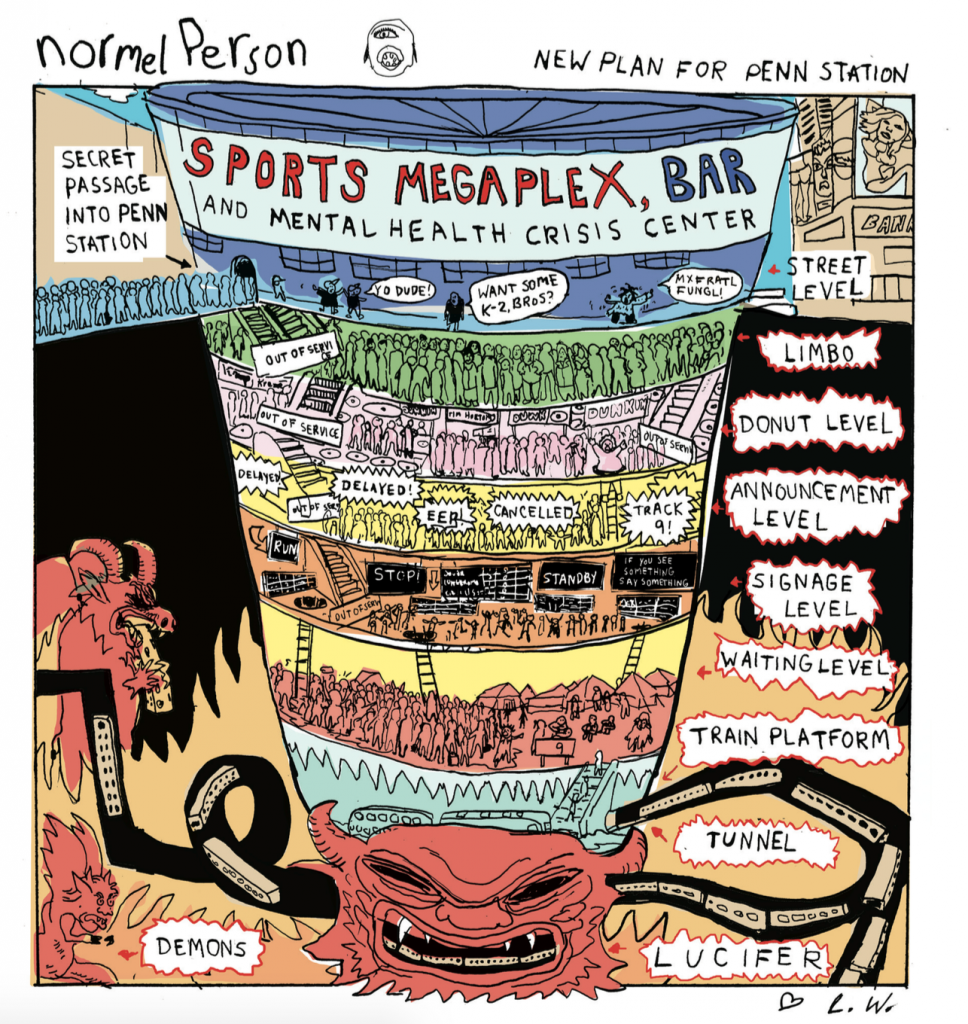
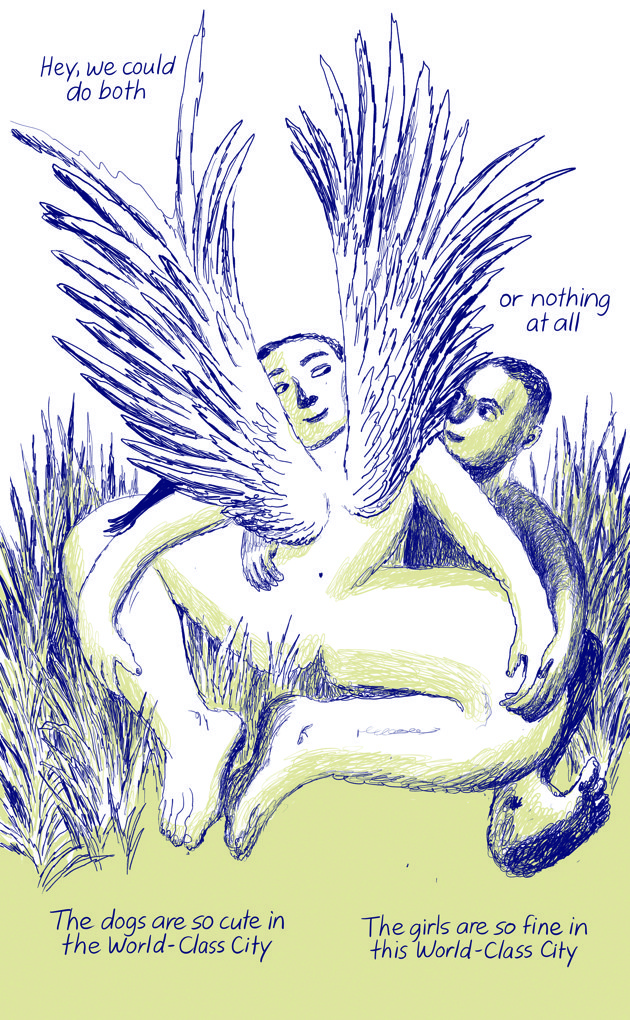
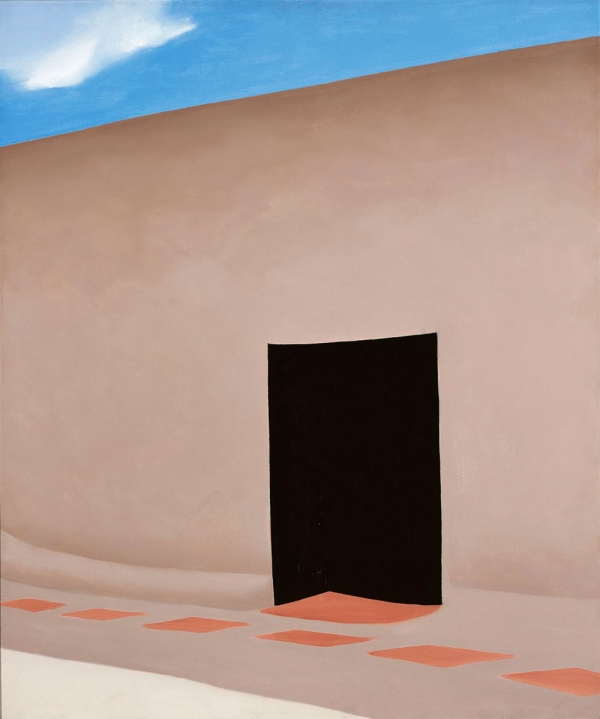
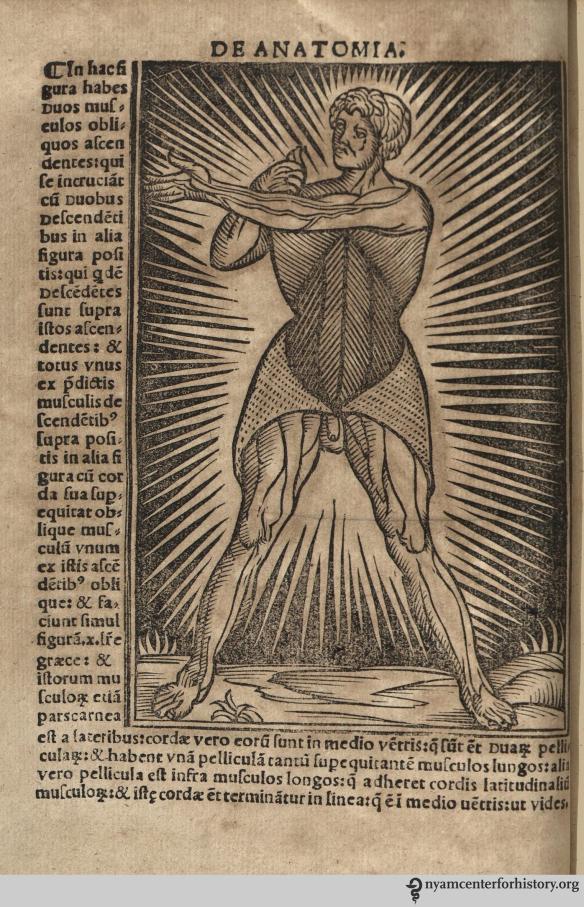
 —————————————————————————————————
—————————————————————————————————